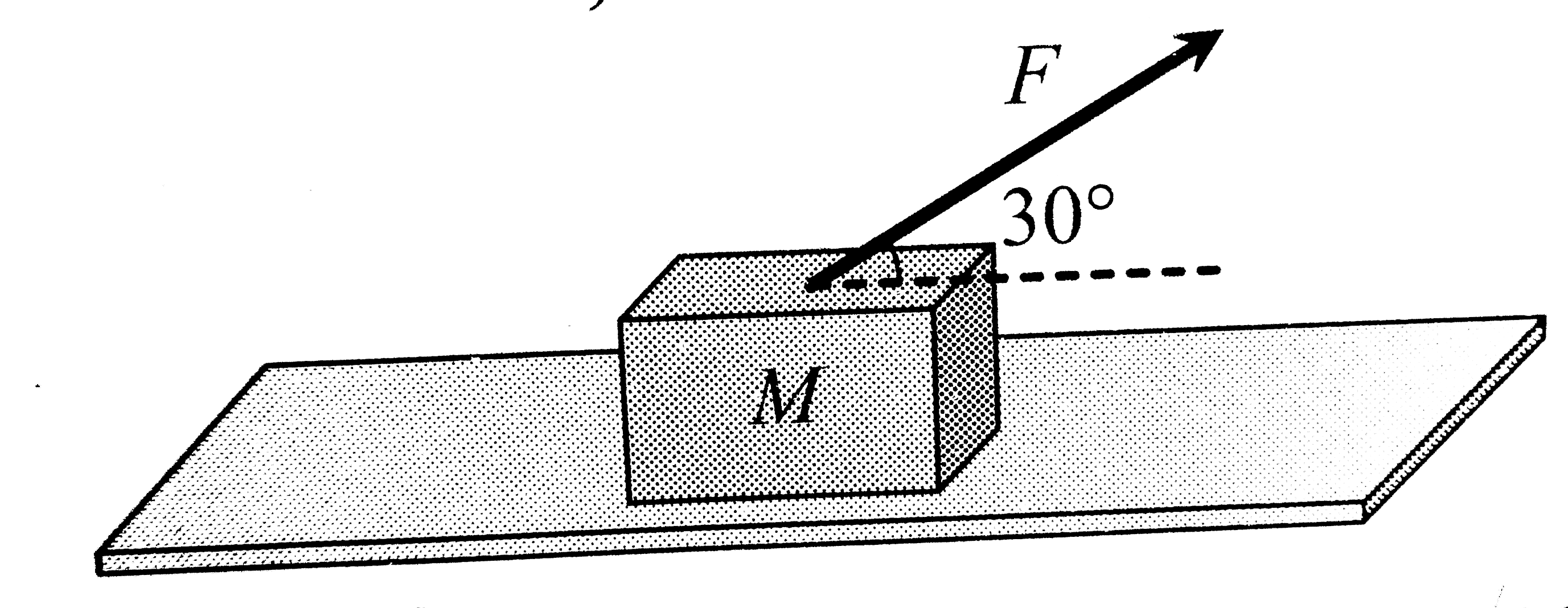A constant horizontal force of 5N in magnitude is applied tangentially to the top most of a ring of mass 10 kg and radius 10 cm kept on a rough horizontal surface with coefficient of friction between surface and ring being 0.2. The friction force on the ring would be: (g=10m/s2)
5 N direction opposte to the applied force
10 N directed opposite to the applied force
10 N in the direction of applied force.
None of these
The correct Answer is:D
To solve the problem, we need to determine the friction force acting on the ring when a constant horizontal force is applied. Here’s a step-by-step solution:
Step 1: Understand the Forces Acting on the Ring
- A constant horizontal force of 5 N is applied tangentially to the top of the ring.
- The ring has a mass of 10 kg and is on a rough surface with a coefficient of friction (μ) of 0.2.
Step 2: Calculate the Normal Force (N)
- The normal force (N) acting on the ring is equal to the weight of the ring since there are no vertical forces acting on it other than its weight.
- Weight (W) = mass (m) × gravitational acceleration (g)
- Given: m = 10 kg, g = 10 m/s²
- Therefore, W = 10 kg × 10 m/s² = 100 N
- Thus, N = 100 N.
Step 3: Calculate the Maximum Friction Force (F_friction)
- The maximum friction force can be calculated using the formula:
Ffriction=μ×N
- Given: μ = 0.2
- Therefore:
Ffriction=0.2×100N=20N
Step 4: Determine the Direction of the Friction Force
- The applied force of 5 N tends to move the ring in the positive x-direction.
- Friction always acts in the direction opposite to the applied force to oppose the motion.
- Therefore, the friction force will act in the negative x-direction.
Step 5: Conclusion
- The friction force acting on the ring is 20 N in the direction opposite to the applied force.
Final Answer
The friction force on the ring would be 20 N acting in the direction opposite to the applied force.
---
- A constant horizontal force of 5 N is applied tangentially to the top of the ring.
- The ring has a mass of 10 kg and is on a rough surface with a coefficient of friction (μ) of 0.2.
- The normal force (N) acting on the ring is equal to the weight of the ring since there are no vertical forces acting on it other than its weight.
- Weight (W) = mass (m) × gravitational acceleration (g)
- Given: m = 10 kg, g = 10 m/s²
- Therefore, W = 10 kg × 10 m/s² = 100 N
- Thus, N = 100 N.
- The maximum friction force can be calculated using the formula:
Ffriction=μ×N
- Given: μ = 0.2
- Therefore:
Ffriction=0.2×100N=20N
- The applied force of 5 N tends to move the ring in the positive x-direction.
- Friction always acts in the direction opposite to the applied force to oppose the motion.
- Therefore, the friction force will act in the negative x-direction.
- The friction force acting on the ring is 20 N in the direction opposite to the applied force.
The friction force on the ring would be 20 N acting in the direction opposite to the applied force.
Topper's Solved these Questions
- BOOK - VMC MODULES ENGLISHCHAPTER - ROTATIONAL MOTION EXERCISE - LEVEL - 1 (Angular Momentum, Collision)15videos
ROTATIONAL MOTION
- BOOK - VMC MODULES ENGLISHCHAPTER - ROTATIONAL MOTION EXERCISE - LEVEL - 1 (Mixed topics)15videos
ROTATIONAL MOTION
- BOOK - VMC MODULES ENGLISHCHAPTER - ROTATIONAL MOTION EXERCISE - LEVEL-0 (LA: Long Answer Type)3videos
ROTATIONAL MOTION
- BOOK - VMC MODULES ENGLISHCHAPTER - REVISION TEST-2 JEEEXERCISE - PHYSICS25videos
REVISION TEST-2 JEE
- BOOK - VMC MODULES ENGLISHCHAPTER - SIMPLE HARMONIC MOTION EXERCISE - 7-previous year question46videos
SIMPLE HARMONIC MOTION
Similar Questions
A force F is applied at the top of a ring of mass M and radius R placed on a rough horizontal surface as shown in figure. Friction is sufficient to prevent slipping. The friction force acting on the ring is:
 View Solution
View SolutionA force (F=Mg) is applied on the top of a circular ring of mass M and radius R kept on a rough horizontal surface. If the ring rolls without slipping, then minimum coefficient of friction required is
_PHY_E05_236_Q01.png) View Solution
View Solution
Knowledge Check
- Question 1 - Select One
A block of mass 2 kg initially at rest moves under the action of an applied horizontal force of 6 N on a rough horizontal surface. The coefficient of friction between block and surface is 0.1. The work done by the applied force in 10 s is (Take g=10ms−2)
A200JB−200JC600 JD−600J
A force of 49 N just able to move a block of wood weighing 10 kg on a rough horizontal surface , then coefficient of friction is
View SolutionA block of mass m=5kg is resting on a rough horizontal surface for which the coefficient of friction is 0.2 . When a force F=40N is applied, the acceleration of the block will be (g=10m/s2) .
 View Solution
View SolutionA block of mass 5kg is lying on a rough horizontal surface. The coefficient of static and kinetic friction are 0.3 and 0.1 and g=10ms−2 The frictional force on the block is
View SolutionA body of mass 2kg is kept on a rough horizontal surface as shown in the figure. If coefficient of friction is 0.5, find the work done by frictional force in the interval t=0 to t=5sec
 View Solution
View SolutionA body of mass 10kg is under the action of 138N on the horizontal surface. If coefficient of friction in between the surfaces is one, the distance it travels in 10s in metre is
View SolutionA block of mass 10kg is placed on a rough horizontal surface having coefficient of friction μ=0.5 . If a horizontal force of 100N is acting on it, then acceleration of the will be.
View SolutionA block of mass 10kg is placed on a rough horizontal surface having coefficient of friction μ=0.5 . If a horizontal force of 100N is acting on it, then acceleration of the will be.
View Solution

